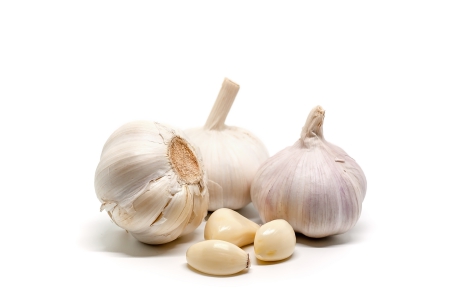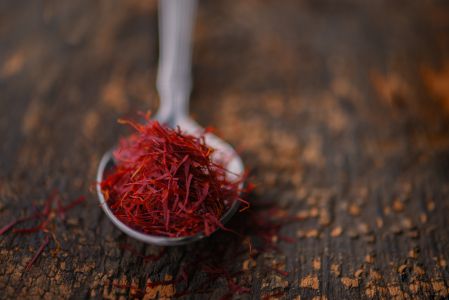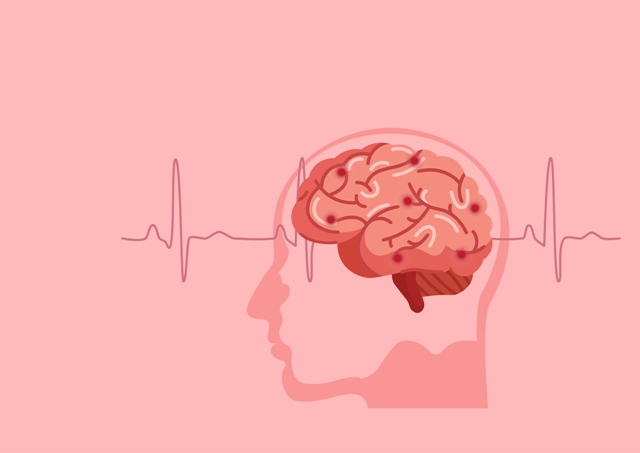Garlic is an important spice used in cooking for centuries. It is a member of lily family and grows in the form of bulb. Bulb is consisting of several smaller pieces of compound called cloves which are surrounded by white colored paper like skin. This skin should be removed before cooking. The yellowish inner flesh of garlic is considered as its edible part. It has a unique pungent flavor. It contains a biochemical compound called allicin, which is responsible for this characteristic flavor of garlic. Apart from cooking, garlic is also well known for its nutritional composition and medicinal property. It helps to prevent several diseases like cardiovascular disease, cancer, obesity, hypertension and common colds and flu. Individual who consume garlic as per required amount can live longer.
What is allicin?
- It is an antibiotic present in garlic
- Basically, garlic contain allin (inactive form) which is converted into allicin (active form) with the help of the enzyme allinase
- Allicin is later converted into allyl disulphide which is the chief component responsible for pungent flavor
The below chart will provide a clear picture of this phenomenon –
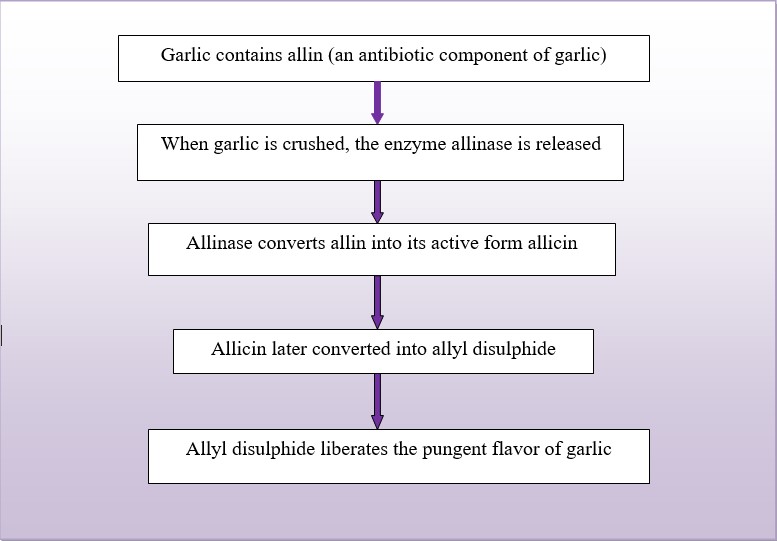
Nutritional composition of garlic
- Garlic is a nutritionally enriched compound that possesses all essential nutrients within it
- It contains carbohydrates, fibres and too some extent of proteins (essential and non-essential amino acids) and fats (saturated and unsaturated fat)
- It provides very less calorie and maximum of the calorie is obtained from carbohydrate content of garlic
- It contains several vitamins such as Vitamin A, D, E, K, B1, B2, B3 and B9
- It contains calcium in significant amount. It also contains magnesium, iron, copper, manganese, phosphorus, sodium, potassium, selenium and zinc
- It also contains ethyl alcohol and water

Health benefits of garlic
Acts as antibiotic
- Allicin present in garlic shows the antimicrobial property. It can destroy the living cells of several harmful bacteria, fungus and parasites within body
- It interferes with their reproductive abilities and prevents their growth, hence helps to reduce their number within the host as well as helps to make them inactive and reduces their severity
- Garlic shows significant role on inhibiting especially gastrointestinal infections because it is more effective to fight against campylobacter bacterium, which is the main causative factor for developing infections in GI tract
- Garlic extract is also used to prevent the susceptibility of tapeworm infections among children
Acts as potential blood purifier
- Garlic helps to purify blood by enhancing the urinary excretion and helps to remove toxins from body
- It helps to reduce the load of impurities in blood and reduces the risk of septicemia
- Consumption of two cloves of garlic (raw) with warm water is the key factor of cleansing blood. If lemon is added in this extract, then it would help to reduce body weight as well

Effect on immune system
- Allicin present in garlic helps to boosting up the immunogenicity
- It helps to stimulate the action of lymphocytes, macrophages, natural killer cells, neutrophils that helps to destroy pathogens
- It is associated with enhancing the synthesis of several immunoglobulins which act as effective antibodies against harmful antigens
- It helps to modulate the secretion of cytokines which helps to enhance immunological responses
- It helps to prevent common cold and flu. Consuming 2 to 3 cloves of raw garlic per day or consuming garlic tea with honey has significant role on preventing fever, stuffed nose and common cold
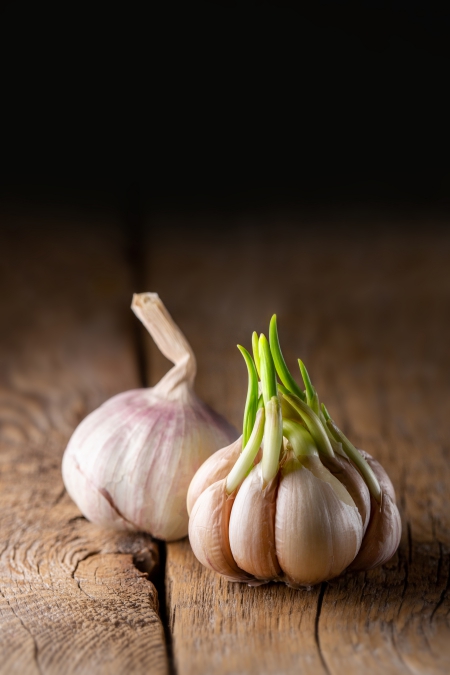
Role on preventing cancer
- Garlic has anti-cancer effect and it plays most significant role on treating prostate cancer, stomach cancers, colorectal cancers, brain cancers and lungs cancers
- The organic sulfur component of garlic helps to destroy the cells of giloblastomas which is considered as a deadly tumor that develops in brain
- It acts as an effective chemo preventive agent for lung carcinoma
- Consumption of garlic can control the malignant growth of tumors in body

Effect on heart
- Diallyl trisulfide component present in garlic is responsible for protecting the heart from damages and it helps to prevent heart attacks, atherosclerosis and heart failures
- It also helps to reduce blood pressure and helps in proper blood circulation
- Another important function of garlic lies on regulating blood cholesterol level. It helps to decrease the level of LDL and increases HDL levels, which is related with reducing the prevalence of cardiovascular diseases and obesity
Role on protecting liver
- Allicin, the sulfur containing compound of garlic helps to prevent alcohol induced liver injury
- Prolong consumption of alcohol increases fatty infiltration which is characterized by excessive accumulation of fatty droplets in liver cell. The fat deposited in liver cells act as a barrier which prevents the transport of oxygen, blood and nutrients within liver cells results in hepatic cell death which in later causes cirrhosis
- Consumption of raw garlic about 2 to 3 cloves daily helps to prevent alcohol induced oxidative stress and helps to prevent liver damage
Applications of garlic
In cookery
- Garlic is exclusively used in cookery for preparing several delicious dishes
- A paste of garlic can be used in making curries or gravies
- It can also be minced and used in meatballs, sausages and other meat preparations as flavoring agents
- It can be roasted and used for preparing sauces or soups
- Garlic can be utilized as an integral part of some baked, braised, sautéed and roasted dishes
- It often used to prepare garlic toast and garlic butter

Medicinal property
- Garlic has various medicinal usages, and it can be used to treat several diseases
- Garlic has antimicrobial properties. It helps to prevent the growth of both gram positive and gram-negative bacteria within body and protect the body from their harmful effects. The extract of garlic is used to inhibit the growth of pathogenic fungus
- Garlic extract has significant effect on lowering blood cholesterol level and hence reduces the risk of developing heart diseases
- Garlic contains ajoene a polysulphide (unsaturated) compound that has hypotensive action
- Garlic extract is very commonly used to enhance the activity of natural killer cells hence related with increasing the immune potentiality of body
- Garlic extract is also used to prevent hyperglycemia
- Garlic contains platelet aggregation inhibitor factor, which is responsible for inhibiting platelet adhesion thus prevent blood clotting within blood vessels

So, it can be stated that garlic has profound health benefits and associated with treating several diseases. We all know that Aristotle was a great and early medicine man and he encouraged to consume garlic for its various therapeutic advantages. Recently it is also used as supplements, but some consideration should be taken before consuming garlic. It is wise to take 2 to 3 cloves of garlic per day and not more than that. It is beneficial to avoid garlic consumption before any surgeries and individual who suffers from asthma should avoid it as it can cause some adverse effects.
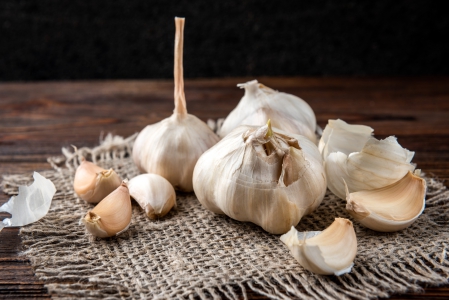
Source:
Alihanoğlu, S., Karaaslan, M. and Vardin, H., 2017. Novel Nutritive Garlic Product''Black Garlic'': A Critical Review of Its Composition, Production and Bioactivity. Harran Üniversitesi Mühendislik Dergisi, 2(3), pp.57-63.
Botas, J., Fernandes, Â., Barros, L., Alves, M.J., Carvalho, A.M. and Ferreira, I.C., 2019. A Comparative Study of Black and White Allium sativum L.: Nutritional Composition and Bioactive Properties. Molecules, 24(11), p.2194.
Cao, M., Zhang, L. and Wu, T., 2017. Advances in the Health Benefits of Garlic. Agricultural Biotechnology, 6(6), pp.42-66.
Matsutomo, T., 2020. Potential benefits of garlic and other dietary supplements for the management of hypertension. Experimental and Therapeutic Medicine, 19(2), pp.1479-1484.
Onyeneke, E.N., 2018. Nutrient, anti-nutrient and phytochemical composition of garlic (Allium sativum), Alligator pepper (Aframomum melegueta), Kola nut (Cola nitida) and Pepper fruit (Dennettia tripetala). International Journal of Innovative Food, Nutrition &Sustainable Agriculture, 6(4), pp.8-16.
Shende, S.M. and Gogle, D.P., 2017. A REVIEW ON THERAPEUTIC APPLICATION OF GARLIC (ALLIUM SATIVUM L.) TO HUMAN HEALTH BENEFIT IN VARIOUS DISEASES. IJRBA T, 3, pp.71-6.
Szychowski, K.A., Rybczyńska-Tkaczyk, K., Gaweł-Bęben, K., Świeca, M., Karaś, M., Jakubczyk, A., Matysiak, M., Binduga, U.E. and Gmiński, J., 2018. Characterization of active compounds of different garlic (Allium sativum L.) cultivars. Polish Journal of Food and Nutrition Sciences, 68(1), pp.73-81.
Zhang, Y., Liu, X., Ruan, J., Zhuang, X., Zhang, X. and Li, Z., 2020. Phytochemicals of garlic: Promising candidates for cancer therapy. Biomedicine & Pharmacotherapy, 123, p.109730.
